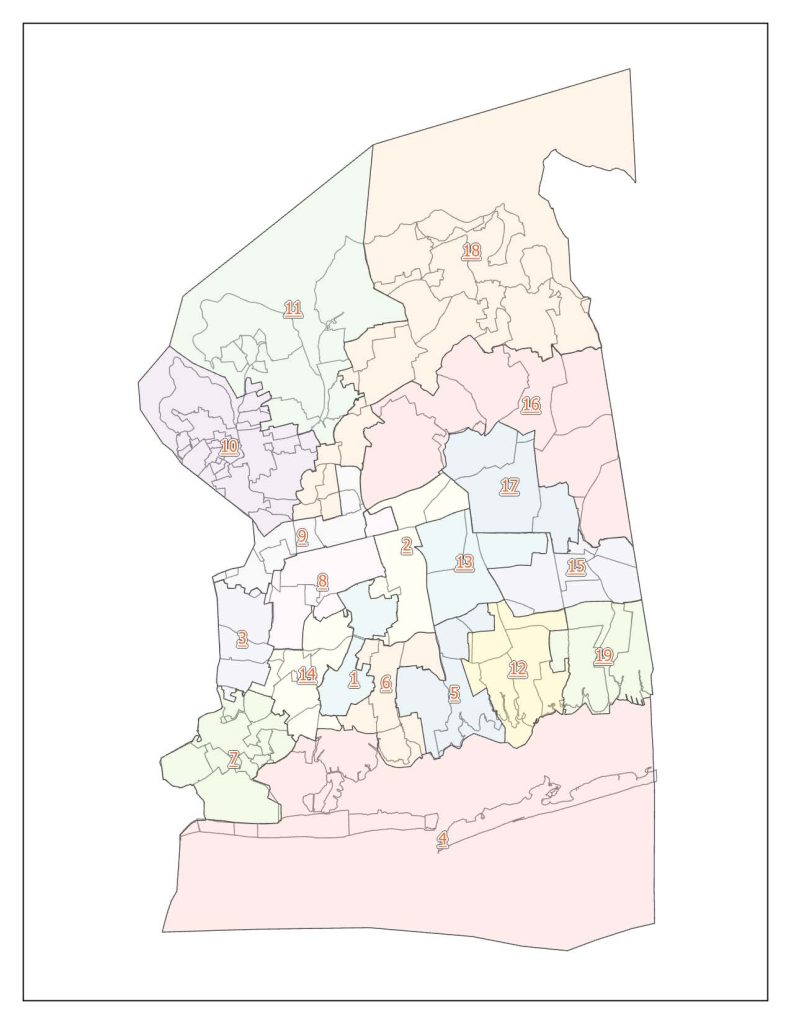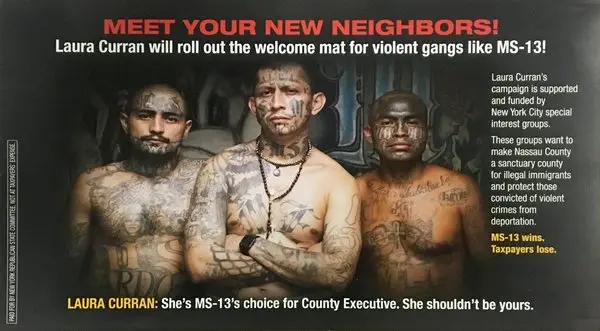By Sujeet Rajan

In February of this year, several civil rights advocates – including the New York Civil Liberties Union, New York Communities for Change, American Civil Liberties Union, LatinoJustice PRLDEF, and the Asian American Legal Defense and Education Fund (AALDEF) – sued the county over racial vote dilution.
What’s Redistricting and Gerrymandering?
Redistricting is the process of redrawing electoral district boundaries, done after every decennial census to reflect shifting populations.
There are three important factors involved in redistricting: districts must be of equal population to comply with the Constitution; districts must comply with the Voting Rights Act to ensure that minorities have an equal opportunity to elect representatives of their choice; and districts must be contiguous so that all parts of the district are connected to each other.
While redistricting is essential to take cognizance of new population realities every decade, and critical to the democratic process, what distorts the process is gerrymandering, or political manipulation of state and district boundaries through redrawing maps. Think of gerrymandering as someone using maneuvers to exploit loopholes in the democratic system, to favor one party. Often, this can put minority voters at a disadvantage.
Effective manipulation in gerrymandering may involve ‘cracking’ (diluting the voting power of the opposing party’s supporters across many districts) or ‘packing’ (concentrating the opposing party’s voting power in one district to reduce their voting power in other districts). It can also be used to protect incumbents, as they can create and protect safe seats which ensures a voice for a particular community..
The Brennan Center for Justice (BCJ) said in a report: “Done right, redistricting is a chance to create maps that, in the words of John Adams, are an “exact portrait, a miniature” of the people as a whole.”
It adds: “…Rather than voters choosing their representatives, gerrymandering empowers politicians to choose their voters. This tends to occur especially when line drawing is left to legislatures and one political party controls the process, as has become increasingly common. When that happens, partisan concerns almost invariably take precedence over all else. Gerrymandering is effective because of the wasted vote effect. It’s most pertinent to the plight of immigrants who live in a district where their vote or contest for a seat is reduced to a farce, with the effort being just another name on the ballot.
Effect of Gerrymandering in the 21st century
In a report, BCJ noted that in 2010, Republicans – in an effort to control the drawing of congressional maps – forged a campaign to win majorities in as many state legislatures as possible.
It was wildly successful, giving them control over the drawing of 213 congressional districts. The redrawing of maps that followed produced some of the most extreme gerrymanders in history. In battleground Pennsylvania, for example, the congressional map gave Republicans a virtual lock on 13 of the state’s 18 congressional districts, even in elections where Democrats won the majority of the statewide congressional vote.
Nationally, partisan bias in congressional maps gave Republicans a net 16 to 17 seat advantage for most of the last decade. Michigan, North Carolina, and Pennsylvania alone – the three states with the worst gerrymanders in the last redistricting cycle – accounted for seven to 10 extra Republican seats in the House.
Democrats have also used redistricting to get desired results: in Maryland, for instance, Democrats used control over map-drawing to eliminate one of the state’s Republican congressional districts.
Nassau County controversy
Nassau County, just east of the borough of Queens in New York City, has been in controversy for its redistricting, gerrymandering, and blatant racism, over the years.
The lawsuit in February this year by civil rights advocates is currently in the ‘discovery’ phase, where the parties are, among other things, producing documents, conducting depositions, and developing expert reports.

The lawsuit alleges the redistricting plan violated the landmark John R. Lewis Voting Rights Act of New York and the New York Municipal Home Rule Law by diluting the voting strength and political influence of Black, Latino, and Asian residents.
It contends that a more representative map would include at least six districts where Black, Latino, and Asian residents constitute a majority of the citizen voting-age population, as well as a district that prevents the dilution of Asian voting influence.
This would make districts more true to the changing demographic of the county. As the lawsuit states: In 1990, Nassau’s population was nearly 83% non-Hispanic white. By 2020, the County’s population had grown to over 1.39 million people, of which only 55% of residents were non-Hispanic white and 44% were Black, Latino, and/or Asian residents.
Though residents of color make up over one-third of Nassau County’s eligible voters the current map – which the Legislature drew behind closed doors with minimal public transparency — only creates four districts out of 19 where Black, Latino, and Asian residents constitute a majority of eligible voters, the lawsuit said. This includes “cracking and packing” communities of color in places such as Lakeview, Freeport, Inwood, South Valley Stream, Elmont, Uniondale, and New Hyde Park. The Greater New Hyde Park area, which has a large, compact Asian community, including Indian American community, has been broken up into three separate districts. Two Asian-origin candidates ran in two of those three districts in the last elections, and lost.
“The Nassau County Legislature’s attempt to squash the electoral power of Black, Latino, and Asian voters speaks to growing, nationwide efforts to disenfranchise communities of color and gut legal protections for their voting rights,” said Perry Grossman, director of the Voting Rights Project at the New York Civil Liberties Union, in a press release.
“The Nassau County Legislature has had ample opportunity to draw a fair and equitable map, yet it has chosen to stand by its egregious racial gerrymander in violation of multiple state laws,” said Ronak Patel, legal fellow at the Asian American Legal Defense and Education Fund.
Patel said that the lawsuit “will correct the legislature’s failure and ensure that communities of color, including the rapidly growing Asian American community of Greater New Hyde Park, have an equal opportunity to participate in the democratic process.”

Jerry Vattamala, an Indian American resident of the village of New Hyde Park, sees an unfair tactic playing out through the current redistricting plan. The county’s Asian American population has grown over the past decade by around 60%, the highest rate among all racial and ethnic groups, NPR reported.
The map’s lines cut through a growing Asian American community in an area known as Greater New Hyde Park, where thoroughfares are lined with gurdwaras, Hindu temples, bubble tea shops and Asian-owned grocery stores, plus annual events for Diwali and Lunar New Year are organized by town government officials.
Vattamala hopes to see a new map with what’s known in the redistricting world as an “influence district,” where there would be enough Asian American voters to have a significant influence on who is elected to the Nassau County Legislature, which has yet to have an elected legislator of Asian descent.
Under the current map, two Democratic candidates who could have been the county’s first Asian American legislators lost to Republicans last year in races for seats in Greater New Hyde Park, the lawsuit said.
“We’re not asking for special treatment or to have any type of advantage,” says Vattamala, an attorney who leads the Asian American Legal Defense and Education Fund’s Democracy Program, in the NPR report. “What we’re demanding is an equal opportunity to elect a candidate of our choice, just like other communities enjoy, mainly the white community in Nassau County.”
The lawsuit also detailed a long history of discrimination against communities of color in Nassau County from the tolerated presence of the Ku Klux Klan to the practice of redlining in the 1970s which effectively barred minority homeownership in suburban and white-majority neighborhoods .
The lawsuit says, “Past discrimination has accumulated over time to make Nassau County the most segregated county in its population class in the United States today. In fact, Nassau County school districts are now even more segregated than they were 40 years ago. One professor referred to the County’s demographic data as a “hyper-segregated pattern.”
No Asian or Hispanic elected representatives
No Black, Latino, or Asian candidate has ever been elected to the office of County Executive, County Comptroller, County Clerk, or District Attorney in Nassau County.
There are no Latino representatives in the legislature, even though the Latino population grew by over 60,000 residents between 2010 and 2020. Nearly one in five residents are Latinos. Also, despite the nearly 60% growth in Asian community in the past decade, there has never been an Asian person elected to the legislature.
The lack of Asian legislators was repeatedly noted during the redistricting process.
Carmen Pineyro, the former deputy mayor of Freeport, testified: “Nassau County demographics, particularly the fast-growing Latino population, as well as the Asian population, have changed drastically in the last 10 years. And yet Nassau County has zero representation of Latinos and Asian-Americans. Either in elected office or even in government leadership. This is not only disappointing but it’s also a sign of how our communities have been ignored and dismissed.”

The lawsuit also points out that only one Black person has ever been elected to the Nassau legislature from a seat outside of a majority-minority district.Adding to the problem of minority exclusion from Long Island political representation is the messaging from campaigns like that of 2017 County Executive Republican candidate distributed a flyer featuring “a photo of three bare-chested Latino men covered with tattoos, and proclaims, ‘Meet Your New Neighbors!’ It says that Laura Curran, a county legislator, is ‘MS-13’s choice for county executive.’” Among many other denunciations of the flyer, the New York Times Editorial Board called it: “Willie Horton, Updated for the Trump Era.”
Responsibility of federal and state courts
In an interview to India Overseas Report, Vattamala, an attorney and Director, Democracy Program, AALDEF, said “the objective of the lawsuit is to have a fair and legally compliant map for Nassau County Legislature districts, a map that would ensure communities of color can equally participate in the County’s political process.”
He added: “In particular, we are challenging the unlawful splitting of the Asian American community in the Greater New Hyde Park area into three different legislative districts, among other claims.”
Asked if political ambitions of some Asian American candidates were stymied in the past because of gerrymandering in Nassau County, Vattamala said: “Since its inception, there has never been an Asian American elected to the Nassau County Legislature. This is despite the fact that, as of the 2020 Census, the Asian American community composes almost 12% of the County’s population and has the fastest growth rate of any racial group – up 59% from 2010 to 2020. Their lack of representation is not due to a lack of Asian American candidates, but instead redistricting plans that gratuitously divide Asian communities, namely in the greater New Hyde Park area.
“The current map challenged in our lawsuit divides this compact Asian community into three legislative districts, making it virtually impossible for candidates supported by the Asian American community to win election to the Legislature.”
Vattamala said a South Asian candidate ran in District 9, and an East Asian candidate ran in District 10, last year, under the newly enacted district line and both candidates lost, despite strong support from the Asian American community.
Vattamala said AALDEF does not have a general position on independent redistricting commissions to ensure fair elections, “but instead we evaluate our position on a given commission on a case-by-case basis. Many so-called “independent” commissions are in fact, not independent.”
He added: “At a minimum, true independent redistricting commissions have the power to unilaterally enact state legislative and congressional redistricting plans, are prohibited from having any politicians or politically associated members, and has a commissioner selection process with limited to no influence from elected officials, political parties, or related persons or entities.”
However, as Vattamala pointed out, the descriptor “independent” is often misused in this context.For example, the New York State Independent Redistricting Commission is not independent at all, but instead is a politician appointed, advisory body. The ultimate power to redistrict still lies with the legislative process.”
He added: “It is problematic that the federal court has allowed for unchecked partisan gerrymandering, which often negatively impacts protected communities of color. The federal and state courts must allow for the protections afforded to communities of color to be enforced.”
(Sujeet Rajan is the Editor-in-Chief of India Overseas Report. This story was produced as part of the 2024 Elections Reporting Mentorship, organized by the Center for Community Media and funded by the NYC Mayor’s Office of Media and Entertainment.)